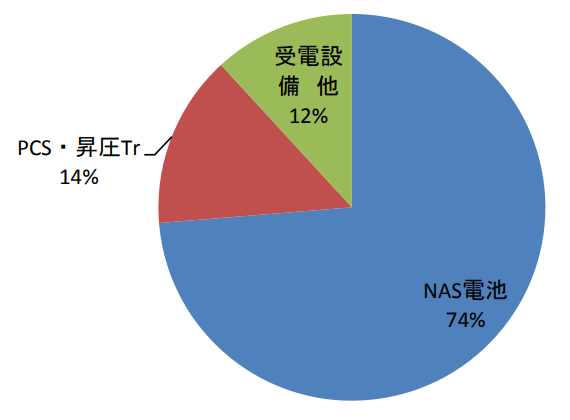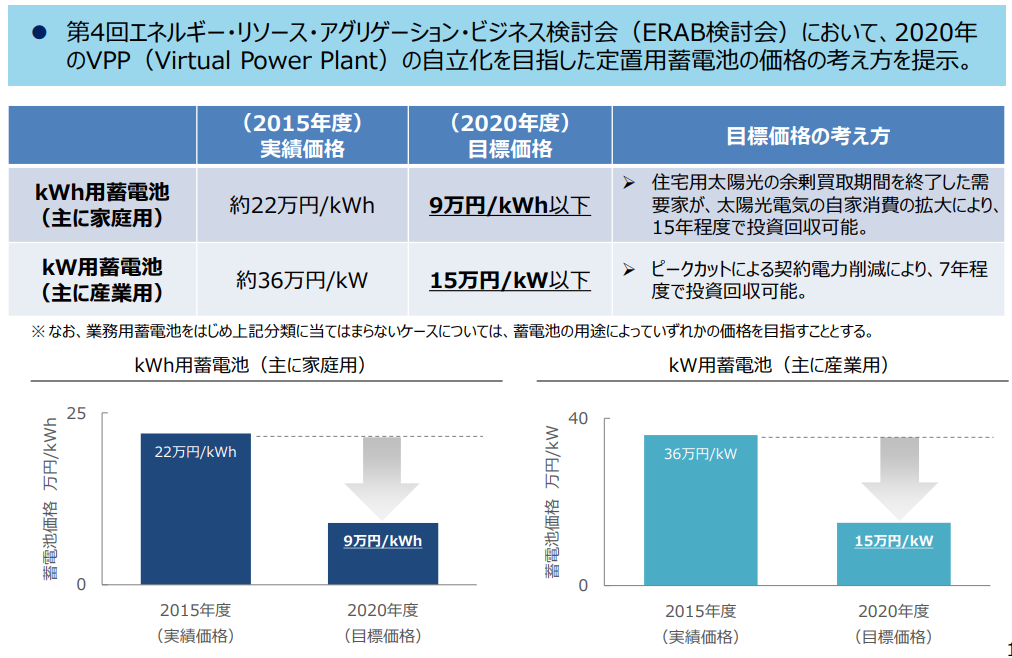需給バランス改善実証の成果について
http://www.nepc.or.jp/topics/pdf/180320/180320_3.pdf
5.総合評価 (2) 経済性の評価
NAS電池 関係が大容量蓄電システム単価の3/4を占めており、この部分のコスト低減が必要。
NAS電池関係を約1/3まで低減できると揚水機と同等の設備費用(kW単価)となる。

年間のメンテナンスコストは、建設費の10%程度と想定している。
5.総合評価 (3) 揚水機との比較
〔凡例〕揚水機に対する優位性 ○:優、×:劣
| 項目 | 蓄電システム | 揚水発電 | |
| 開発面及び 用地確保 |
・規模に応じて小刻みに開発可能 ・ローカル系統近くに設置できる ・一定の広さの土地と近傍に送電線があれば、 確保は比較的容易 |
○ |
・大規模開発となるため、地形的に候補地は限定
される ・主幹系統への接続となるため、大型の送変電 設備が |
| 必要 工期 | ・約10ヶ月(H27.6 ~H28.3)(豊前実績) | ○ |
・10年程度以上と長期開発となる |
| 運用及び 応答速度 |
・出力停止することなく連続で、充放電運用が可能 ・数秒単位での応答が可能 |
○ |
・充電(揚水)と放電(発電)の間に切り替え
のため停止が必要 ・運転中は数秒単位での応答が可能、停止中は 並列まで数分を要する |
| システム 効率 | ・71.3 ~75.8%(豊前実績) | ○ |
・65 ~68%程度(当社実績) |
| 設置費用 | ・43万円/kW、 7万円/kWh (豊前実績、土地代を除く) | × |
・20万円/kW、2.3万円/kWh * (参考値) |
| 耐用年数 | ・15 ~20年程度(豊前:設計値~運用目標) | × |
・約60年(参考値)* |
| 出力変化 | ・充放電ともに任意の出力設定が可能 | ○ |
・発電側は、最低出力以上であれば任意の出力設定
が可能 ・揚水側は、原則出力固定 (可変速揚水のみ一定範囲で出力変化が可能) * |
